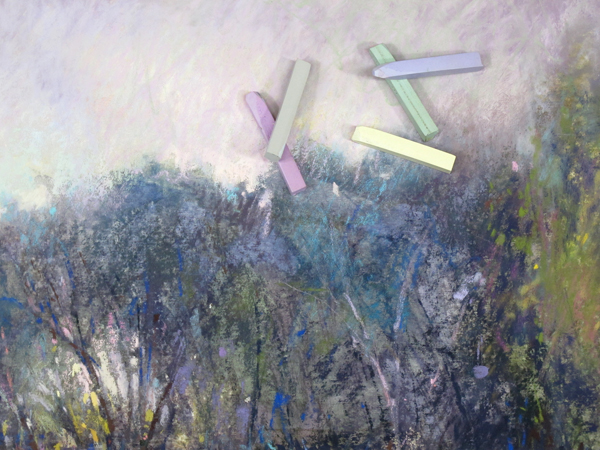Pastel Technique | 3 Ways to Use Harder Pastel Sticks

After working in pastel for well over 40 years, I have again become enamored with the usefulness of harder pastels. Beyond their capabilities for traditional pastel application, they can provide the means for creative pastel techniques. In last week’s post, I discussed how harder pastel sticks have become more prevalent today, renewing interest among pastelists. Variations within the products include the size of the stick, intensity of the pigment, and relative hardness.

3 Ways to Use Harder Pastel Sticks
- Initial application. Pastel never dries, creating a hard shell for subsequent layers. While pastel is not as volatile as a wet layer of oil paint that will profoundly interact with the additional of more paint, it still has an effect. For this reason, many pastelists prefer to begin with a thin layer of pastel and build to thicker layers. The best way to facilitate this is by beginning with harder pastels and progressing to softer sticks as the painting progresses. This technique follows the traditional painting method of working from thin to thick.
- Broken color application. Artists began to seriously experiment with broken-color painting techniques beginning with the Impressionist movement of the late 1800s. The visual fusion of color, heightened by the fragmented application of color, magnified the representation of light and became one of the core principles of the movement. French artist Edgar Degas layered marks of pastel utilizing the techniques of hatching and cross-hatching. Pastel, representing pure pigment in a stick form, made it a nearly perfect medium for this technique. The harder the stick, the more control of the application, which allowed for additional layering.
- Softening and blending. A harder pastel stick can be used to replace a finger, hand or other blending tool as a means of weakening an edge or color tonality. The dynamism of a pastel painting is due in part to the pure crystalline quality of the pigment. When it’s deposited onto a surface without being smeared or smudged, light will reflect off the pigment prisms and have more vibrancy. If an edge needs to be softened or an area weakened within the painting, it’s often better to feather a harder pastel stick into the space than attempting to smudge the pastel. Conversely, if an area requires lightening or darkening, a harder pastel can be gently nudged into the area to affect its value appearance. Traditionally, softer pastel is applied with subsequent layering, but in this instance a soft pastel would deposit too much pigment, greatly altering the area’s appearance. Hard pastel, on the other hand, allows for nuanced application.
Individually, we may end up with preferences regarding harder or softer pastel sticks. But no matter our personal preference, each serves a purpose in the hands of the experienced pastelist.
MORE RESOURCES FOR ARTISTS
• Want to see Richard McKinley move a pastel painting from the Sensitivity stage through Serendipity and Solution? Watch it on a video download right now!
• Subscribe to Pastel Journal magazine
• Watch pastel art workshops on demand at ArtistsNetwork.TV
• Get unlimited access to over 100 art instruction ebooks.
• Online seminars for fine artists




Have a technical question?
Contact UsJoin the Conversation!